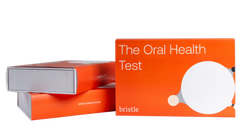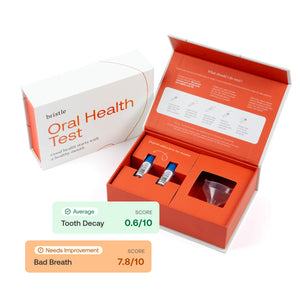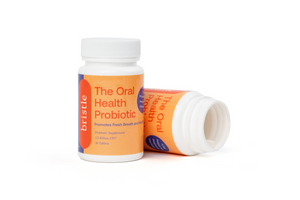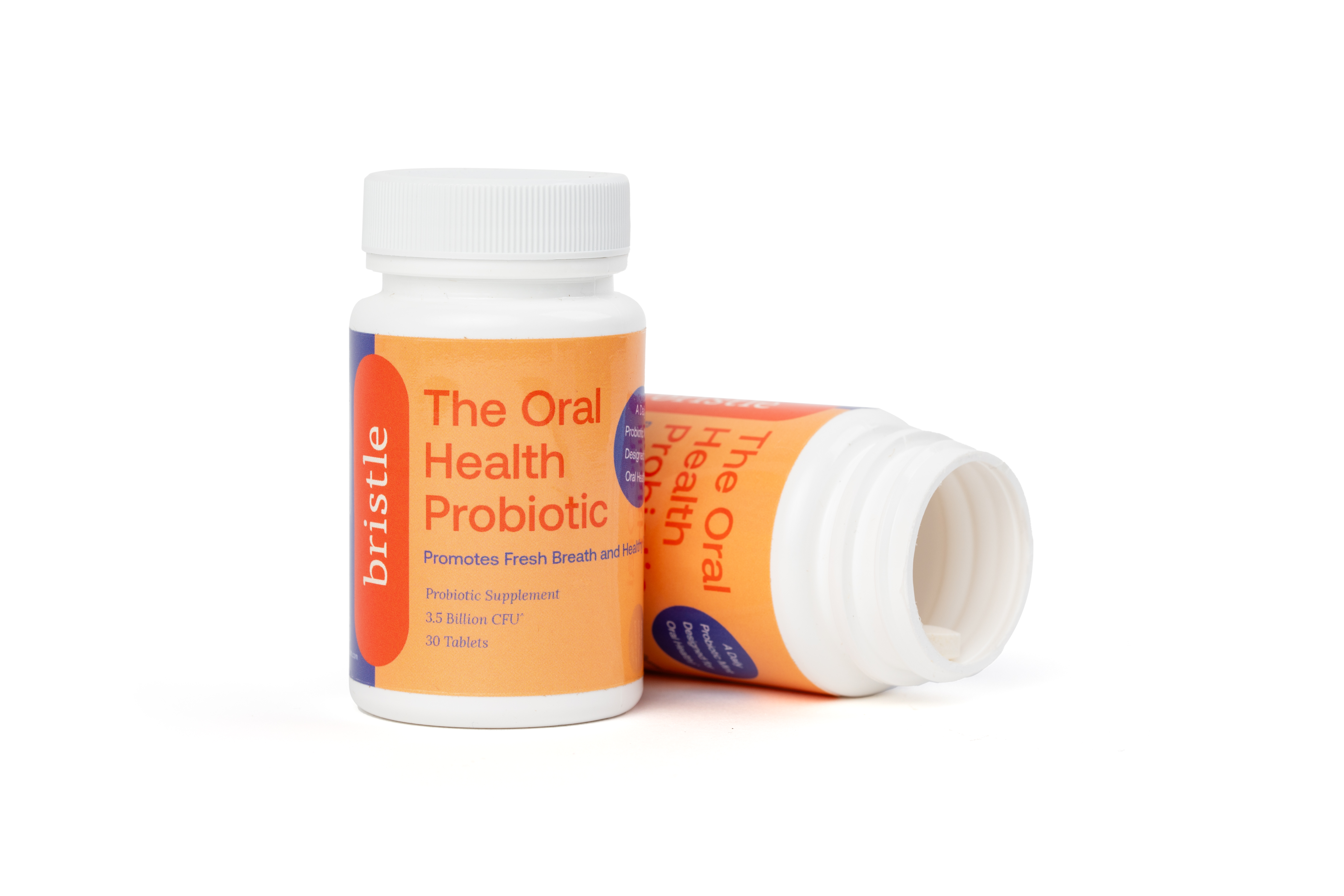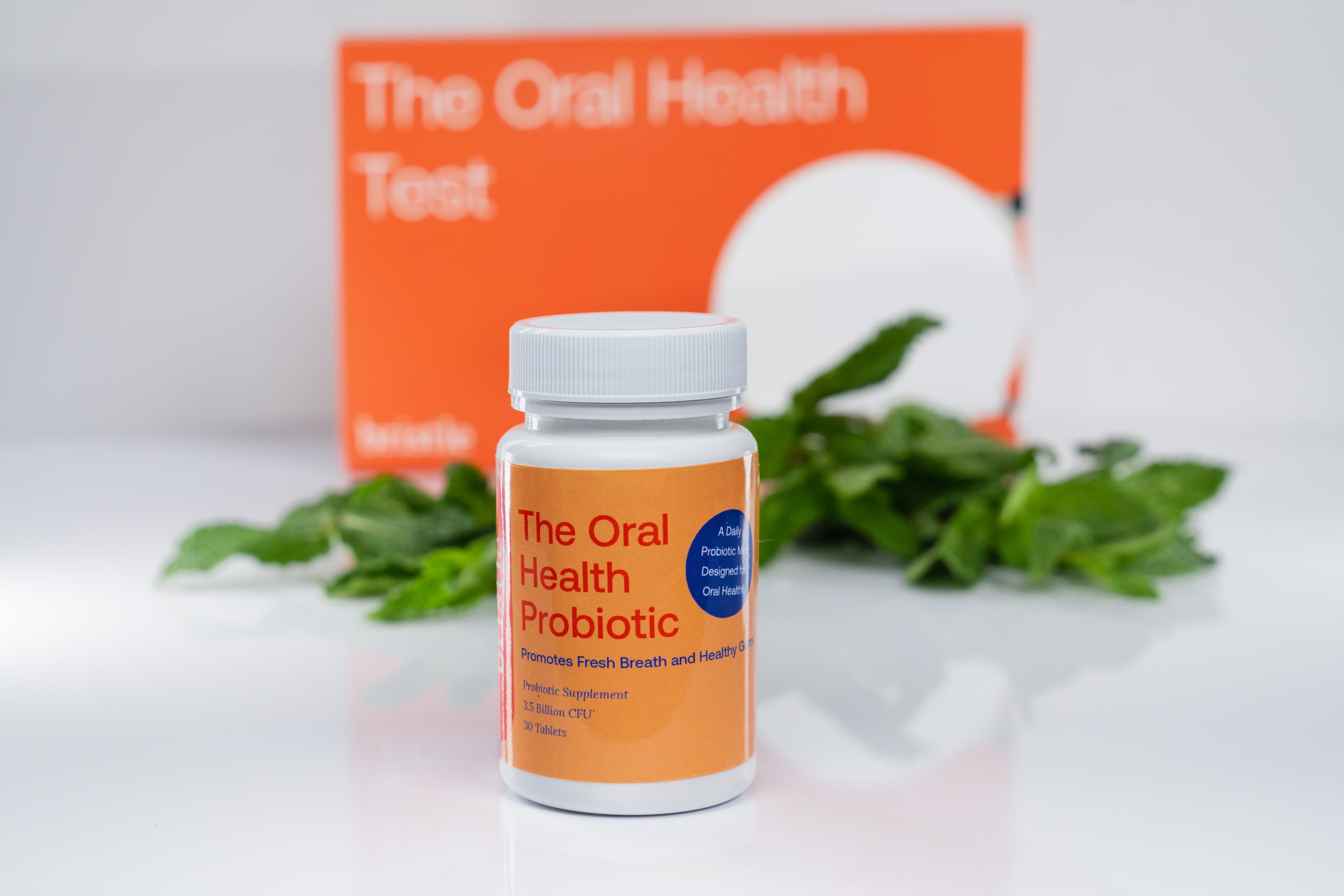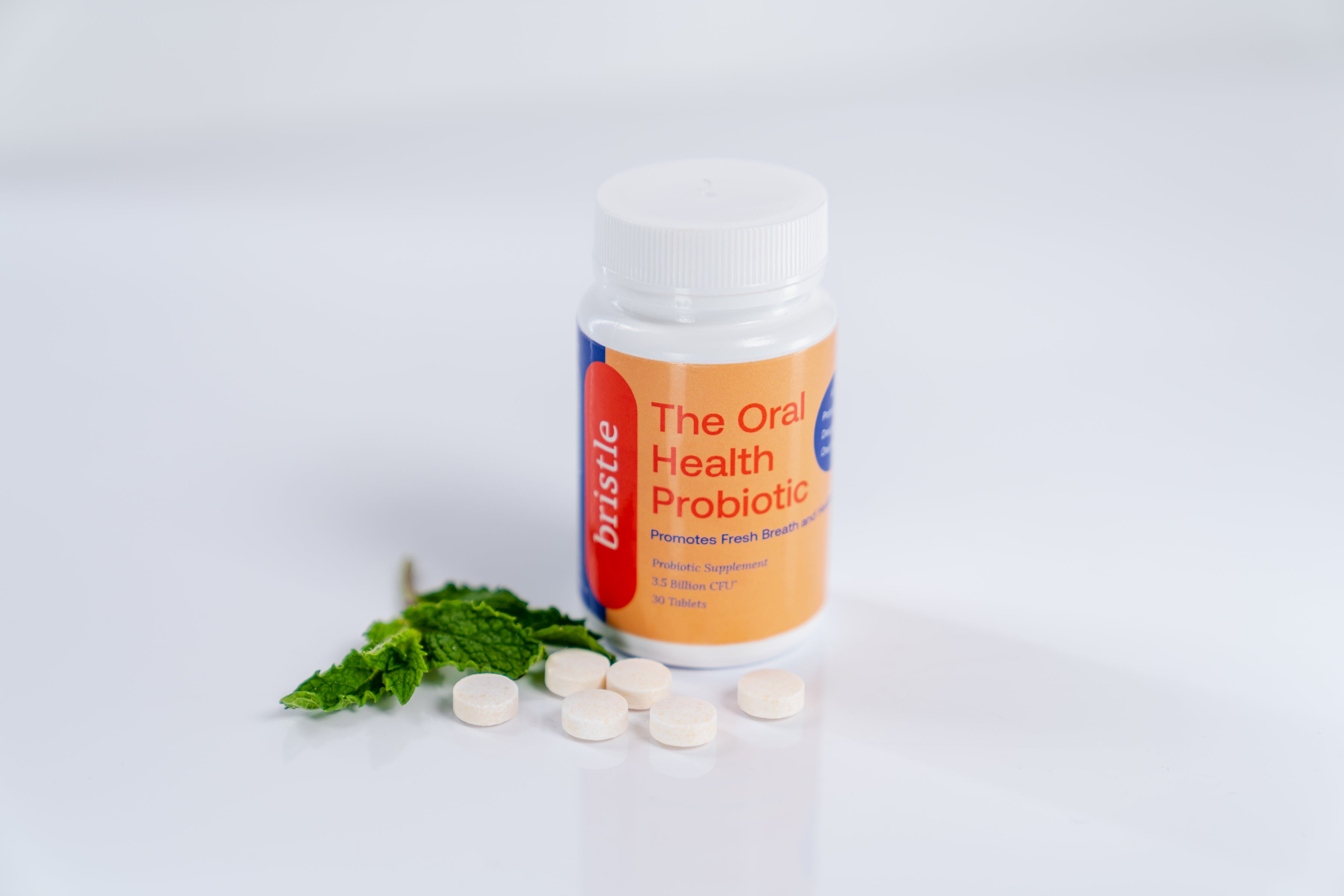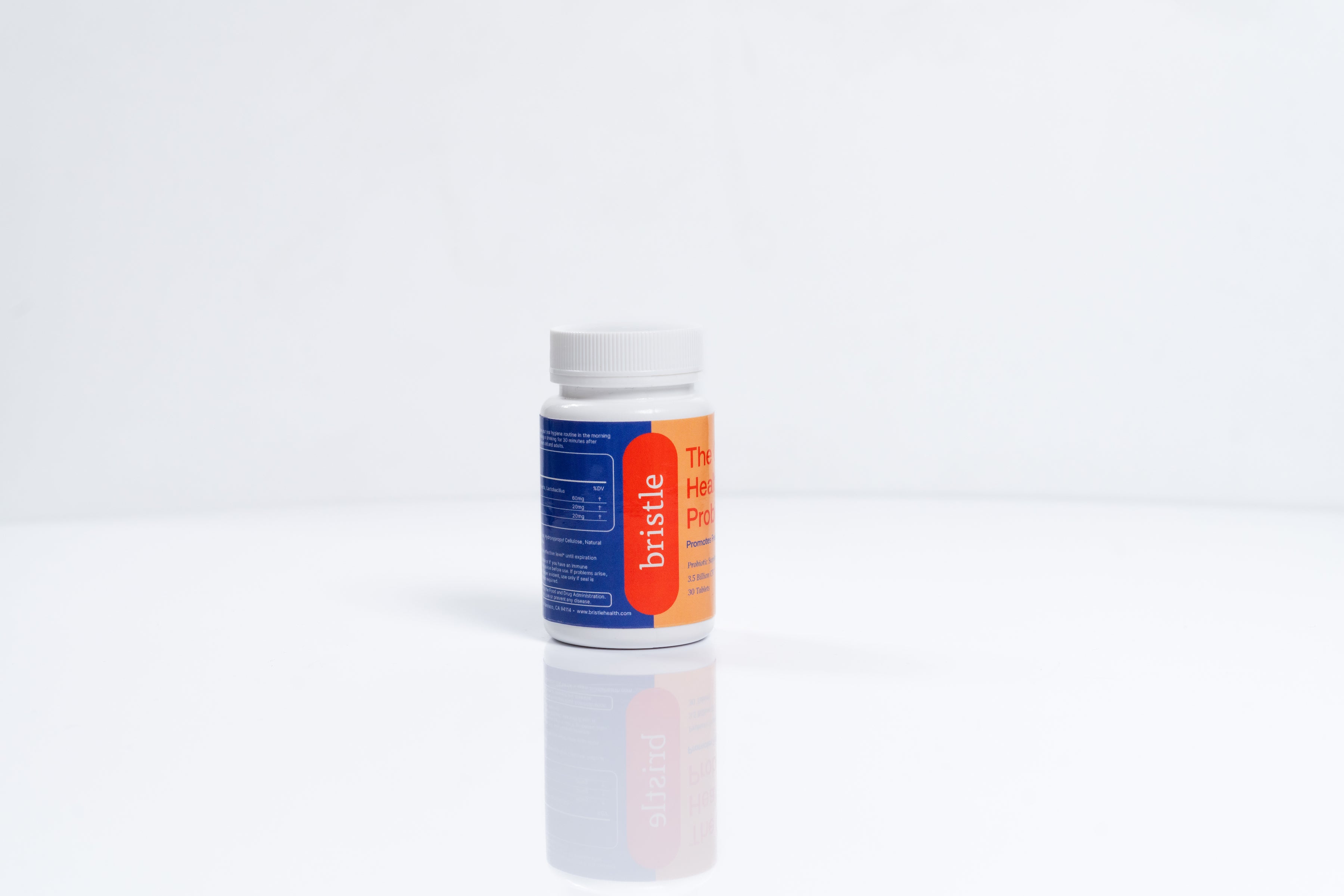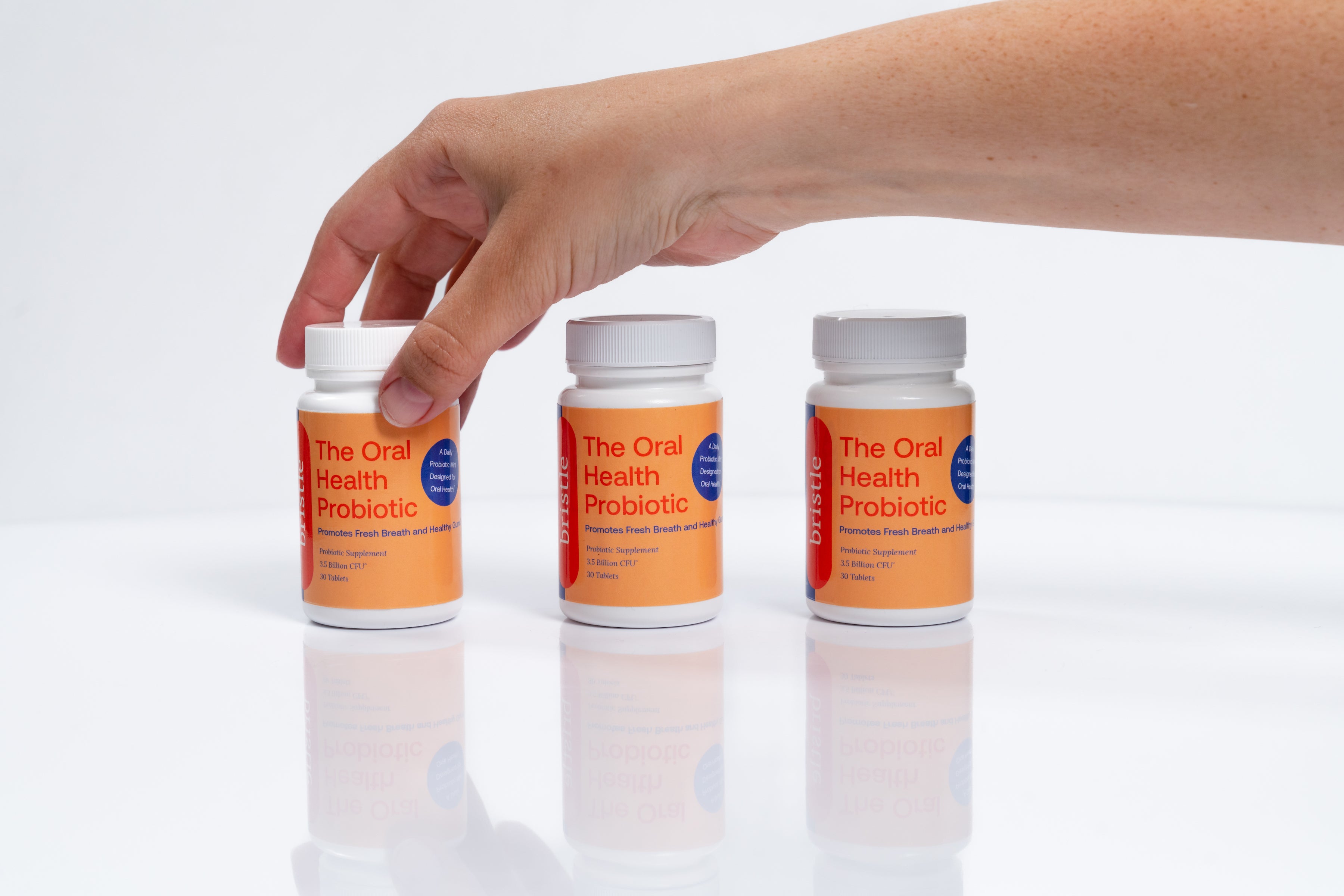What is halitosis and what causes it?
Bad breath aka halitosis is a condition that affects more than half of the world’s population [1]. Although there are several underlying factors that can cause halitosis, over 90% of cases arise due to mouth-related conditions.
As we’ve discussed in detail in a previous post, bacteria in your mouth are the main producer of bad breath while some fungal species can also be responsible. These bacteria live on your teeth and your tongue and they break down food particles, dead mouth tissues, and saliva to produce various malodorous compounds.
Halitosis can bring about several unpleasant outcomes such as social anxiety [2] and embarrassment and therefore it is important to get yourself evaluated if you think you have this condition. Most of the time people don’t sense the odor in their own breath as they’ve grown accustomed to their own odors. On the flip side, some people who complain about halitosis may not have detectable odors in their breath—a condition known as pseudo-halitosis [3].
How can I find out if I really have bad breath?Getting yourself tested is important to assess whether or not you actually have halitosis, to which extent, and possibly, to understand the underlying cause of the disorder. There are several testing methods for testing for bad breath. Some of these methods only check the presence of this condition and its severity while other tests offer more in-depth analyses including the type of odorous compounds present as well as the type of bacteria that’s releasing them.
Below, we discuss a few halitosis detection tests including how they work and how effective they are.
1. The sniff test
This halitosis test is one of the oldest techniques and it is still commonly used by dentists. As the name implies, it involves directly detecting bad odors by sniffing.
When carrying out this test, the patient breathes in through the nose, holds the breath for a while, then exhales directly through the mouth or through a pipette held in the mouth. The examiner who is standing 20 cm away from the patient smells the exhaled breath and evaluates the odor, grading it on a scale of 0 to 5. Grade 0 means no detectable odor while Grade 5 indicates “Very strong malodor” [3].
The sniff test can find out whether or not you have halitosis. It can also give an idea of the type of volatile compounds present but that totally depends on the competence of the evaluator.
This bad breath test is quite easy, inexpensive, and doesn’t require specialized tools. It does, however, rely on the experience and background of the examiner. It can also get a little awkward, especially if you’re anxious about the situation.
Another downside of the sniff test is it can be influenced by other factors like wearing scented cosmetics, smoking, drinking tea, or eating garlic. To avoid this, both the examiner and the patient being examined should keep away from these odorous materials for at least 48 hours before the test.
2. Halimeter™ test
The Halimeter™ test is another direct method that tests for bad breath. Halimeter™ is a portable instrument that measures the levels of volatile sulfur compounds in the breath [4]. In this test, you breathe through a tube that is connected to a sensor that detects sulfur gases.
It is easy to perform and won’t cause any inconvenience to the patient or the clinician. However, some studies have found that this method can be not as effective and accurate as the sniff test in diagnosing halitosis [4]. Halimeter™ also can’t tell apart different odors, thus this can only be used to detect whether the compounds associated with bad odor are present or not.
3. BANA test
The BANA test is an indirect method of detecting halitosis. This test works by detecting odor-causing bacteria in saliva or tongue coating. The test strips contain a compound called benzoyl-DL-arginine-a-naphthylamide (in short known as BANA) which is broken down by the enzymes of halitosis-causing bacteria [1]. This enzymatic transformation makes the compound change color, and that indicates the presence of bacteria.
This is an easy and relatively cheap method of finding if a person is suffering from halitosis but it can’t differentiate between distinctive bacterial species. Nevertheless, it is considered to be as accurate as the sniff test.
4. Salivary incubation test
The salivary incubation test is another indirect method of evaluating the bad breath [5]. In this test, saliva is collected in a glass tube, and then it is incubated in an oxygen-free chamber. The clinician assesses the odor after incubation.
Though this is basically similar to the sniff test, it takes away the awkwardness of the evaluator and the patient and there is also less influence by the external odors.
5. H. pylori breath test (urea breath test)
One of the bacterial species that can cause bad breath is Helicobacter pylori (H. pylori). This is typically a bacteria that infects the gut but studies in the past 20 years have confirmed that it is linked to halitosis [6].
During the H. pylori breath test the clinician will ask you to have a pill or a solution containing radioactive urea and after 15 minutes, you will breathe out into a bag [7]. This bag is then sealed and its contents will be analyzed in a lab.
If H. pylori is present, it will break down the urea in the solution, and its breakdown products containing radioactive carbon will be detected in your breath.
This test is easy to carry out, relatively inexpensive, and accurate. However, it can only tell you if the bad breath is due to this specific bacterium—H. pylori. If you want to know if there are other bacteria that are responsible for your halitosis condition, you will have to do additional tests.
6. β-galactosidase test
β-galactosidases are a group of enzymes that are important in carbohydrate metabolism. Studies have found that increased β-galactosidase activity in the saliva is an indication of the presence of bacteria that cause dental biofilms [8]. These enzymes can change the odor profile of saliva and this means high β-galactosidase levels are linked with halitosis.
In order to do this halitosis test saliva is placed on a paper disk containing a substrate. The paper disk changes color based on the β-galactosidase activity and the extent of breath malodor will be evaluated accordingly.
7. At-home oral microbiome tests
All of the tests that we listed above will give you an idea of whether or not you have halitosis and to what extent. Some tests are even able to distinguish among different conditions that are associated with halitosis.
However, if you need to address the situation properly, and get rid of breath malodor for good, you need to get to the bottom of it, so to speak. This means thoroughly analyzing what produces bad breath and knowing how to prevent it.
As we briefly mentioned at the beginning of this post, it’s mainly the oral bacteria that cause bad breath. These bacteria break down remaining food particles, dead cells, and saliva to produce various odorous compounds such as volatile sulfur compounds, short-chain fatty acids, alcohols, and ketones [9].
Normally there’s a balance between the microbial communities living inside your mouth. This controls the overgrowth of bad bacteria that trigger conditions like bad breath. If this balanced state is disturbed for some reason, the bad bacteria can outnumber the good ones, giving rise to unpleasant outcomes.
These unhealthy bacteria can cause several other problems including tooth decay, dental caries, and gum inflammation.
Oral microbiome tests allow you to get an insight into your oral microbiome profile. It lets you know the types of bacteria present in your mouth, and which ones are probably causing trouble. This lets you address the specific issues with specific solutions targeted at them.
Bristle offers an at-home oral microbiome testing kit that permits you to test for halitosis in the comfort of your home. What’s more, we will get deep into your problem, profiling your oral microbiome and identifying the main culprits of bad breath. This lets us propose personalized solutions to your problem, nipping it in the bud.
The earlier you detect microbiome disturbances, the easier it is to regain balance.
Are there other ways I can test for bad breath at home?If you want to check if you have halitosis but don’t feel comfortable going to a dentist to get yourself evaluated, there’re a few simple tests you can try at home.
**However, please keep in mind that these are just preliminary tests and you should get your issue professionally addressed before you consider any treatment. Mints, mouthwashes, and gum can only go so far. If you want a more permanent solution for bad breath, you need to deal with the root cause of the problem, which will most likely be the microbiome disturbances. **
1. The back-of-the-hand test
This might sound a bit unpleasant but it’s an effective way of testing if you have bad breath by yourself.
To do this test, you first need to lick the back of your hand and then wait for 5-10 seconds for the saliva to dry out. The next step is to smell your hand at a distance of one inch or so.
If you detect a foul smell, it’s time to get yourself properly evaluated. However, there’s a chance you might not find any bad smell as this primarily tests the tip of your tongue which is more or less self-cleaning.
In order to get a better idea, you need to test the back of your tongue as well.
2. The spoon test
This test evaluates the back of your tongue. Take a small spoon and place it at the back of the tongue upside down. Now gently scrape forward. Sniff the material that comes off onto the spoon and see if it gives away any malodors.
3. The floss test
Smelling your floss after you’ve flossed is a surefire way to tell if your breath stinks. The food debris and bacteria in between your teeth can contribute to your bad breath and it can be a sign that your oral microbiome is changing.
4. Get a second opinion
The problem with self-testing is that you, most probably, have developed a tolerance toward your own breath and this can get in the way of detecting any bad odors in the breath.
If you suspect this is the case, you can ask a second person to check how your breath smells. While this is a far more reliable method than testing for yourself, it depends on the person who agrees to be your evaluator. Make sure you choose a trustworthy person who tells you the truth no matter what.
On the other hand, there’s the possibility of this being a bit embarrassing situation for both of you.
In conclusion
Halitosis can be a challenging situation for those who suffer from it. However, if you detect it sooner, better your chances are for curing it for good. There are several ways you can test for bad breath, some of which require you to consult with a dentist. You can do some basic assessments at home but their reliability can be questionable.
One of the best options is to try an at-home microbiome analysis. That way, you can test from the comfort of your home and you can be sure that the results are trustworthy. What’s more, you will get specific product and diet recommendations that are tailored to your oral microbiome profile as well as one-on-one support from a specialist.
References
[1] B. Aylikci and H. Çolak, “Halitosis: From diagnosis to management,” J. Nat. Sci. Biol. Med., vol. 4, no. 1, p. 14, Jan. 2013, doi: 10.4103/0976-9668.107255.
https://www.ncbi.nlm.nih.gov/pmc/articles/PMC3633265/
[2] T. Zaitsu, M. Ueno, K. Shinada, F. A. Wright, and Y. Kawaguchi, “Social anxiety disorder in genuine halitosis patients,” Health Qual. Life Outcomes, vol. 9, no. 1, pp. 1–7, Nov. 2011, doi: 10.1186/1477-7525-9-94/TABLES/3. https://pubmed.ncbi.nlm.nih.gov/22051118/
[3] “Halitosis - StatPearls - NCBI Bookshelf.” https://www.ncbi.nlm.nih.gov/books/NBK534859/#_NBK534859_pubdet_
[4] D. P. Falcão, P. C. Miranda, T. F. G. Almeida, M. G. da S. Scalco, F. Fregni, and R. F. B. de Amorim, “Assessment of the accuracy of portable monitors for halitosis evaluation in subjects without malodor complaint. Are they reliable for clinical practice?,” J. Appl. Oral Sci., vol. 25, no. 5, p. 559, Sep. 2017, doi: 10.1590/1678-7757-2016-0305.
https://www.ncbi.nlm.nih.gov/pmc/articles/PMC5804393/
[5] M. Quirynen et al., “A Salivary Incubation Test for Evaluation of Oral Malodor: A Pilot Study,” J. Periodontol., vol. 74, no. 7, pp. 937–944, Jul. 2003, doi: 10.1902/JOP.2003.74.7.937. https://pubmed.ncbi.nlm.nih.gov/12931755/
[6] W. Dou et al., “Halitosis and helicobacter pylori infection: A meta-analysis,” Medicine (Baltimore)., vol. 95, no. 39, 2016, doi: 10.1097/MD.0000000000004223. https://www.ncbi.nlm.nih.gov/pmc/articles/PMC5265885/
[7] “Helicobacter pylori (H. pylori) infection - Diagnosis and treatment - Mayo Clinic.” https://www.mayoclinic.org/diseases-conditions/h-pylori/diagnosis-treatment/drc-20356177
[8] L. Teixeira Essenfelder et al., “Salivary β-glucosidase as a direct factor influencing the occurrence of halitosis,” Biochem. Biophys. Reports, vol. 26, p. 100965, Jul. 2021, doi: 10.1016/J.BBREP.2021.100965. https://www.ncbi.nlm.nih.gov/pmc/articles/PMC7941027/
[9] K. Hampelska, M. M. Jaworska, Z. Ł. Babalska, and T. M. Karpiński, “The Role of Oral Microbiota in Intra-Oral Halitosis,” J. Clin. Med., vol. 9, no. 8, pp. 1–17, Aug. 2020, doi: 10.3390/JCM9082484. https://www.ncbi.nlm.nih.gov/pmc/articles/PMC7465478/
